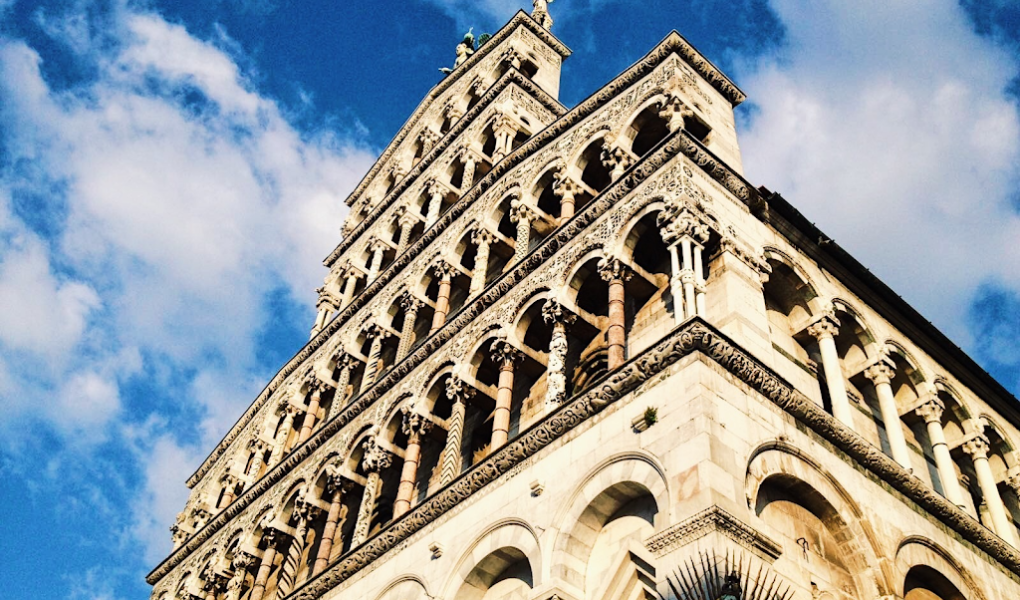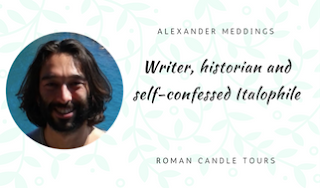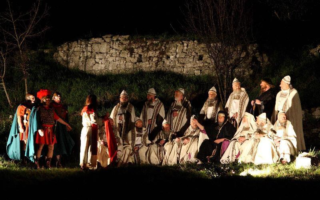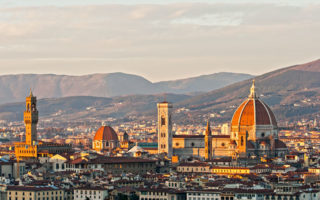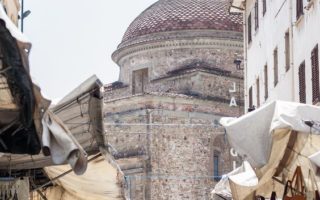The Definitive Guide To The Best Day Trips From Florence
As the city that gave birth to Stendhal syndrome (that is an overdose on beautiful art), Florence has no shortage of attractions. The Uffizi, the Duomo and the David are just three Florentine attractions that have become famous the world over. But sightseeing can be exhausting, especially when the city’s at its busiest. It’s just as well, then, that Tuscany’s capital is ideally situated at the centre of Italy, so you’re in the perfect position to beat a retreat and take one or two day trips from Florence.
Deciding which day trips to take during your time in Florence can be challenging, especially when there’s so much on your doorstep. That’s why we at Roman Candle Tours have written this post: to give you some inspiration and help you pick your perfect day trips from Florence. Here are our top five recommendations.
Fiesole
Perched on a hill just a few kilometres north of Florence, Fiesole offers by far the best panoramic over the renaissance city and surrounding Tuscan countryside. But the oft-neglected town, which predates Florence by some 800 years, is actually home to an abundance of historical curiosities of its own.
Fiesole was first founded by the Etruscans in the eighth century BC and fell under Roman rule around 500 years later. You can still see traces of the Etruscan city’s defensive walls. But the Etruscan city itself is long gone—destroyed by the Romans during the tumultuous political times of the late Republic.
In 63 BC, Marcus Tullius Cicero, one of the consuls for the year, entered the Roman Senate and delivered perhaps the most scathing speech in antiquity, accusing the senator Lucius Sergius Catilina of attempting to overthrow the Republic. Faced with such a serious accusation and abandoned completely by his peers, Catiline was forced to flee the capital. And the place he chose to hole himself up was the Etruscan city of Fiesole.
 |
| “Cicero denounces Catiline” by Cesare Maccari (1882 – 1888) |
Catiline and his co-conspirators held out against the Romans here until 62 BC when they were killed in battle near the town of Pistoia. But Catiline’s death didn’t mark the end of hostilities between Rome and Fiesole. Intent on destroying the city, Senate sent a certain Julius Caesar to raze Fiesole and found a settlement in the valley below.
This new settlement he named Fiorenza (in Italian Firenze, or, in English, Florence); some say in honour of one of his fallen comrades, Fiorinus; others say because he founded the settlement in spring when everything was flourishing.
Despite the Romans setting up (permanent) camp in the valley below, Fiesole remained independent until the eleventh century. Then, threatened by the existence of the overlooking settlement, the Florentines sacked Fiesole and forced its leading families to resettle in the city below.
Fiesole’s main attractions are its Roman archaeological site and on-site museum. Hewn into the hillside, Fiesole’s ancient theatre is believed to be one of the oldest Roman theatres in the world, built to accommodate for up to 3,000 spectators. It’s still, in fact, the site of annual musical performances, held during the popular summer festival Estate Fiesolana.
Aside from the theatre and nearby Etruscan walls, Fiesole is home to a number of churches and museums, the most interesting of which is the Monastery of San Francesco. Just as worth visiting as the cloistered monastery itself is its bizarre, eclectic museum, which contains an array of artefacts brought back from missions in the Far East. Among its collections are Ming and Qing dynasty vases depicting some pretty powerful portrayals of hell, and, naturally, a perfectly preserved Egyptian mummy.
Because it’s so close, you should make Fiesole a morning or afternoon trip rather than a day trip from Florence. To get there, take the #7 bus from Via La Pira (just off Piazza San Marco) going to Fiesole Piazza Mino. Tickets cost €1.20 from a ticket-machine or tabaccheria and are valid for 90 minutes.
Siena
As former financial capitals of medieval Europe, Florence and Siena share a bitter historical rivalry that to some extent still lingers to this day. For a brief time during the mid thirteenth century it was Siena, not Florence, that was the dominant power in Europe. But the vicissitudes of history (and an unwelcome spell of the Black Death) saw its fortunes fade and Florence’s prosper.
Fast-forward to today and when it comes to which city has more to offer, there’s no doubt as to the winner. Siena might be a city soaked in medieval charm and steeped in gothic architecture, but if sightseeing is your raison d’être, you can quite easily cover all there is to see in Siena in a day.
When the French philosopher Michel de Montaigne visited Siena in the sixteenth century, he described the Campo, its main piazza, as the most beautiful in Italy. Half a century later it’s hard to disagree. Sloping down towards the Palazzo Pubblico and its imposing 97-metre high belltower, the Campo still makes up the beating heart of Sienese life. Never is this truer than on July 2 and August 16 when it becomes the scene of the famous bareback horse-riding event known as the Palio di Siena.
The other main attraction in Siena is its Duomo. Easily rivalling Florence’s with the appearance of its façade (and infinitely more impressive in terms of its interior), the Duomo would have been Italy’s largest church outside Rome had plans for its extension not been rudely interrupted by the plague. Even as it stands, however, its remarkable marble flooring and awe-inspiring array of artworks (including statues by Donatello) make it well worth the visit.
Should you want to visit Siena with an expert guide (and without the hassle of navigating Tuscan public transport system!), Roman Candle Tours runs a Siena and San Gimignano and in a day from Florence tour, which encompasses all of these sites and more.
San Gimignano
Situated 27 kilometres northwest of Siena, the towering township of San Gimignano may well be the most visited small village in the country. Don’t let this put you off though; it’s for good reason that it’s so popular. San Gimignano encapsulates medieval Tuscany better than any other Tuscan town—its remarkable preservation owed, ironically, to the sudden and complete capitulation of its nobility in the mid fourteenth century.
Gutted by the Black Death (1348), the once powerful town of San Gimignano submitted to the rival superpower of Florence. Fortunately, because San Gimignano no longer posed a threat, rather than tear down its towers the Florentines allowed them to stand. And this is why 14 of them still tower above the Tuscan skyline.
San Gimignano might be a little way out from Florence, but it’s small enough that you can comfortably visit in an afternoon. Even at a leisurely pace, you can walk from one side of the town to the other in just 20 minutes. This being so, the key is to take it slowly. After you’re finished admiring the breathtaking fresco cycles at the Collegiata (San Gimignano’s equivalent of a Duomo), make sure to factor in time to try out its famous Vernacia di San Gimignano wine and stop off for a bit to to eat at Dulcisinfundo or a spot of gelato at Gelateria di Piazza.
Roman Candle Tours has recently published a post about visiting Florence with the kids, and if you’re visiting with the family you’ll be glad to know that San Gimignano has its own fair share of child-friendly attractions. With its model reconstruction and immersive multimedia experience, San Gimignano del 1300 is a great place to take the kids. It provides a great potted history of the town, served up in a way that’s interactive, digestible and, most importantly, entertaining.
Pisa and the Square of Miracles
For many, Pisa is famous for one thing and one thing only: its vertically challenged tower. But beautifully peculiar though the Leaning Tower is, it’s just one of several monuments on the Campo dei Miracoli that make Pisa so worth a day trip from Florence.
As you’d expect from one of the most powerful former city-states on the Mediterranean coast, Pisa’s twelfth century Duomo easily rivals its Florentine and Sienese equivalents. Its four colonnaded levels of white stone and dark-grey marble tower over the piazza, while its richly ornate interior is resplendent with artworks, including an apse mosaic by Cimabue.
Just as architecturally impressive is the Camposanto, once described as the most beautiful cemetery in the world (though Venice’s San Michele must also be in the running). The white marble walls of this huge gothic cloister run the northern end of the piazza. Once, its internal frescoed walls were one of the wonders of medieval Europe. This aspect of its legacy was unfortunately obliterated by Allied bombs of the Second World War.
If you want expert insight into Pisa’s monumental history, Roman Candle Tours offers this in the Square of Miracles Tour. The tour even includes a trip up the Leaning Tower itself, though note that it’s not for the faint-hearted. With a winding stairwell of nearly 300 steps, and a disorientating lean of five degrees, don’t rule out an impromptu re-enactment from a certain classic scene from Hitchcock’s “Vertigo.”
Lucca
The walled medieval town of Lucca is an enchanting place—unpresumptuous, wealthy, and quietly conservative. It’s also largely undiscovered, only appearing recently on Tuscany’s tourist radar. If you want an authentic taste of Tuscan life and a day away from the crowds of Florence, Pisa and Siena, Lucca is easily one of the best day trips from Florence.
As we’ll come on to in a moment, Lucca has no shortage of things do see. But as with all Italian towns, it’s worth whiling away a few hours wandering its quirky medieval streets and alleyways at leisure, seeing what you stumble upon next, and popping into shops, bars and gelaterias as and when the moment takes you. One thing you must do, though, is see Lucca is from above (and around) by walking or cycling its renaissance walls, which still completely circuit the city.
Within the city itself, the main attraction is the Church of San Michele in Foro, which, as its name suggests, was built on the site of the city’s Roman forum. Though funds ran out before the eleventh century church could be finished, the façade is simply stunning—a colonnaded masterpiece exhibiting the finest example of Pisan-Romanesque architecture anywhere in Italy.
Just as popular as San Michele in Foro is the Piazza del Anfiteatro. Another relic of Lucca’s Roman past, the piazza takes its shape from the ancient Roman amphitheatre that belies it. As you’ll see when you visit, it was a big beast: built to seat some 10,000 spectators. Thankfully, you can’t imagine that many people in the piazza today. In the summer months, however, a fair few people mull around its bars and cafés.
Several fantastic restaurants line the Piazza del Anfiteatro and its arterial streets. But if it’s a visual as well as culinary experience you’re after, I couldn’t recommend Trattoria da Ulbaldo highly enough. Its gothic décor and idiosyncratic collection of brick-a-brac was so strange that when walking in I wasn’t sure if I was entering an established Italian restaurant or stumbling upon a scene from a B-rated horror flick.
The food was, however, to die for. Italian fried food is my thing, so I had the Cotoletta alla Milanese) breaded pork cutlet with fried potatoes and mixed fried vegetables, washed down with a few glasses of the curiously named house red—Vino del Cazzo.
Florence in a day with Roman Candle Tours
While it’s essential to explore the surrounding Tuscan countryside by going on one or two day trips from Florence, make sure you don’t miss out on also visiting all that the renaissance city itself has to offer.
Whether it’s meeting Michelangelo’s David in the Accademia or immersing yourself in the world-famous collection at the Uffizi, Roman Candle Tours offers a variety of tours in Florence to suit every taste.
And remember, if something’s struck a chord and you want to find out more, you can always get in touch and talk to one of us about making it part of your own tailored tour.
